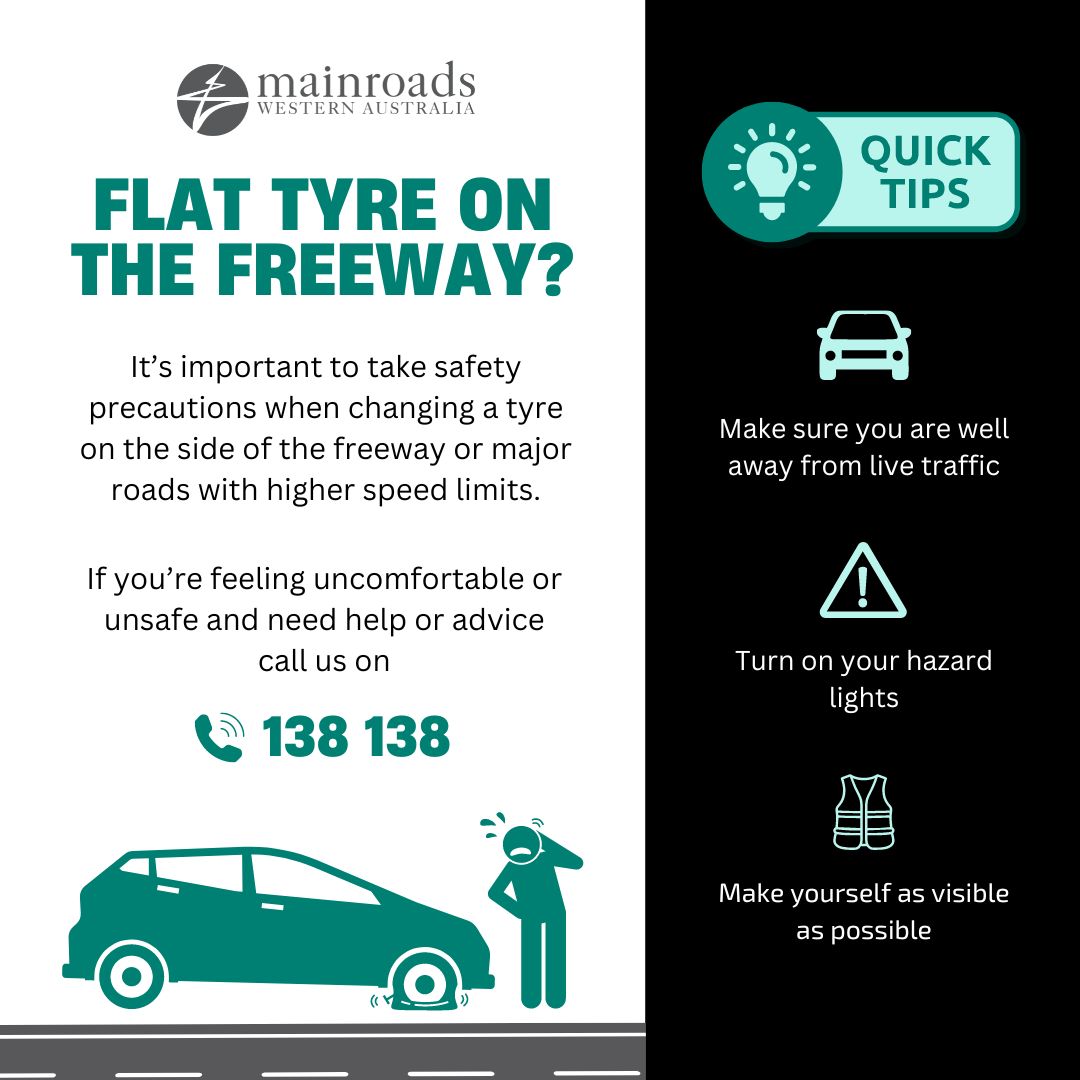Driving in Perth
Whether you’re driving into the CBD to catch a show or heading out to the Swan Valley to sample some wine, it is important to know the road rules. We want you to enjoy the journey and arrive safely.
What to do in a breakdown or crash
If you have ever broken down on a major road or freeway, it can be scary - especially with fast moving traffic around you.
If you can, try to exit the freeway or major road in your vehicle. Alternatively, move your vehicle to an emergency lane or to the side of the road.
Sit tight, remain in your car, and stay calm.
Leave your seat belt on and turn your hazard lights on.
If required, call emergency services on 000.
Call us on 138 138 for further advice.
How we help you
Experienced operators monitor Perth freeways 24/7. A tow truck or Incident Response Service vehicle may be deployed to move broken down vehicles to a safer location. From there, you can arrange roadside assistance or further towing services to take your vehicle to your preferred location.
How you can help us
Service your vehicle regularly and ensure you have enough fuel prior to travelling.
We don’t have eyes everywhere, so we also rely on the community to report incidents. Call us if you see any debris, damaged signs, or issues on the road.
138 138

Northbridge Tunnel
The 1.6 kilometre tunnel is a vital link on the Graham Farmer Freeway, which offers drivers a time-saving option to bypass the Perth CBD.
When making your way through the tunnel:
Turn your headlights on
Keep a safe distance between the vehicle in front of you
Avoid unnecessary lane changing
Observe all signage and stay alert
Ensure your vehicle meets the 4.9 metre height clearance
How we help you
With no emergency lanes in the tunnel, stay inside your vehicle and wait for instructions via your radio, the PA system or electronic signs.
Tunnel operators monitor the tunnel 24 hours a day and will call for emergency services if required. They will also send for the Incident Response Service to move your vehicle to a safe location.
Tunnel Closures
Scheduled closures are required throughout the year to allow us to safely conduct maintenance activities, such as system testing and cleaning.
Our Travel Map provides road closure information to help you plan your trip.
Safety was top priority in the design on the tunnel. Tunnel operators monitor drivers 24 hours a day and will communicate with drivers in the event of a breakdown or incident.
Electronic overhead signs, technically known as ‘Lane Use Management Signals’, let you know if the lane is closed ahead.
- A red "X" means the lane is closed. Exit the lane as soon as possible.
- Flashing yellow means proceed with caution.
- A green arrow means the lane is open.
- A white number with a black background and a red annulus is the speed limit.
- A white arrow pointing to another lane means change lanes where indicated.
There are also electronic overhead signs to deliver important safety messages.
Emergency bays are located at the tunnel entry and exit points, and emergency escape routes are also available.
Air quality was also a consideration in the design, and the fire suppression and ventilation systems ensure the quality remains well above national guidelines
Towing in Perth
Learn more »Smart Freeways
Learn more »Traffic lights
Learn more »Current projects
See what we're building in Perth »Page last reviewed: | Last updated:





